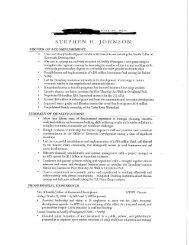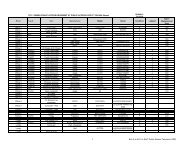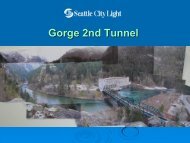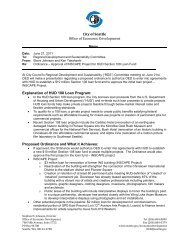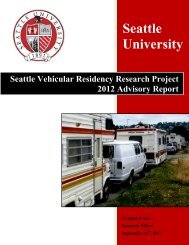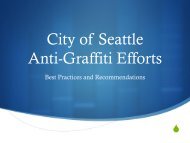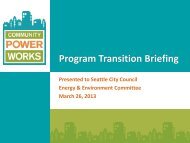2013 Water System Plan, Volume II - Seattle City Clerk's Office - City ...
2013 Water System Plan, Volume II - Seattle City Clerk's Office - City ...
2013 Water System Plan, Volume II - Seattle City Clerk's Office - City ...
Create successful ePaper yourself
Turn your PDF publications into a flip-book with our unique Google optimized e-Paper software.
Chapter 5 <strong>Water</strong> Infrastructure<br />
properly design pipes on supports. The Ductile Iron Pipe Research Association (DIPRA) also<br />
publishes a computer program for selecting supports and spacing of ductile iron pipes.<br />
A. Pile Supports<br />
Pile supported pipelines are rare in the SPU water system. However, in some locations,<br />
such as crossing a wetland or in loose soils, pile-supported pipelines may be necessary.<br />
A licensed civil or structural engineer must design the pile support and calculate pipeline<br />
thickness. Because pipelines installed on piles are typically not continuously supported,<br />
they present unique design challenges. Among the issues are additional stresses placed<br />
on the pipeline due to the lack of support. Such design issues must be investigated and<br />
modeled by a licensed structural engineer.<br />
i<br />
ii<br />
Above Grade Pile Support<br />
For an above-grade exposed pile support, the design engineer should consider the<br />
pipeline and pile coating system. In most cases, both the pile and pipe will require a<br />
coating, and cathodic protection must be considered. Additionally, pipeline insulation<br />
may be needed to protect the line from freezing temperatures and in no-flow situations.<br />
Buried Support<br />
If the pipeline is on piles and buried, a qualified licensed civil or structural engineer must<br />
carefully review the connection to the piles to ensure the pipe and piles operate as one<br />
entity during seismic and uplift conditions.<br />
B. Aerial/Bridge Supports<br />
SPU owns and operates a few aerial (aboveground) pipelines in its water system. A<br />
structural engineer licensed in Washington State should be involved in aerial pipeline<br />
design. Like pipelines on piles, aerial pipelines are not continuously supported, and<br />
therefore present unique design challenges.<br />
Aerial pipelines can either be supported from above, by hanging the pipe, or cradled in a<br />
utility corridor under the bridge. In either case, the pipe supports place additional<br />
loadings on the pipe wall.<br />
The following are special considerations for aerial design:<br />
Where possible, aerial pipelines should be avoided for security and vibration<br />
concerns.<br />
When pipes are hung under existing bridges, roadway clearance design must<br />
consider the potential for damage from trucks traveling above the legal height limit.<br />
Additional protection should be considered such as line valves or structural<br />
modifications to the bridge.<br />
With an exposed pipe design, the design engineer must consider the pipeline<br />
coating system. Additionally, pipeline insulation may be needed to help control<br />
thermal expansion of the pipeline, and keep the line from freezing temperatures and<br />
no flow situations. AWWA Manual M11 provides an analysis method to determine if<br />
freezing is a concern.<br />
SPU Design Standards and Guidelines<br />
5-21



